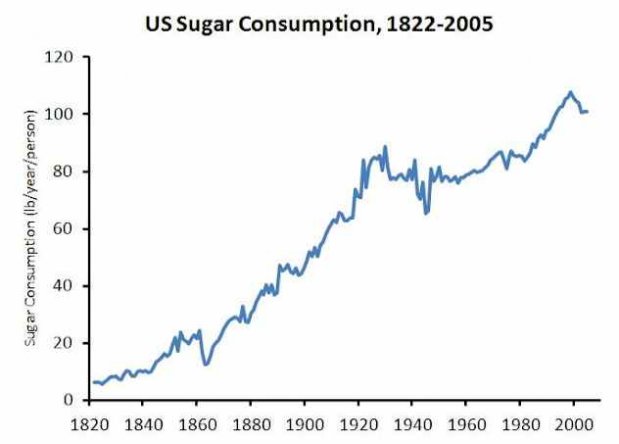Are table sugar and high fructose corn syrup just empty calories or can they be actively harmful?
Or is there a reason why whole foods, or a plant-based diet is preferable to a diet that includes artificial junk and processed sugars?
In 1776, at the time of the American Revolution, Americans consumed approximately four pounds of sugar per person every year. This had climbed to 20 pounds and by 1994. Now we are nearer to 160lbs per person per year! Half of table sugar is fructose, making up about 10 percent of our daily diet. This isn’t from eating apples, but instead the fact that we are each guzzling the equivalent of 16-ounce soft drinks daily; that amounts to about 50 gallons annually.

There has been increasing concern, however, that these sugar calories could be worse than simply empty calories. The scientific and medical community has been hard at work researching the impacts of sugar on the body, however the food industry, including sugar farmers have been lobbying hard, and making the right connections to get their products in the hands of everyone, including children at school. That means your children have less access to natural food and beverage with no added sugars, but are instead restricted to choices that most healthy adults would avoid all together.
Sugar & Its Impact on the Body
Fructose hones like a laser beam on the liver, and such as alcohol, fructose may increase the fat in the liver. The rise in non-alcoholic fatty liver disease is among the most remarkable medical developments over the last three years–the development of fatty liver inflammation as a public health issue here and around the planet.
These may not be messages that the sugar industry or beverage makers want to hear. In response, the director-general of the industry front group, World Sugar Research Organization, replied, “Overconsumption of anything is harmful, including water and air.” Yes, he compared the overconsumption of sugar to breathing too much.
Under American Heart Association’s new sugar guidelines, most women should eat no more than 100 calories every day from added sugars, and many men ought to eat or drink no more than 150.
That means that just one little can of soda can take you over the daily recommended allowance of sugar!
The new draft guidelines from the World Health Organization suggests we can gain from limiting added sugars to below 5% of calories. That is about six spoonfuls of added sugar.
I don’t understand why they don’t just urge zero as best, but considering that current consumption is at an average of 12-18 spoonfuls every day right now, the WHO’s new recommendations seem quite radical. Nevertheless, just because someone is an F student, doesn’t mean that a C- is the bar to set.
Not a day goes by that I do not try to fight the silent killer, lurking in almost all our foods. That is why I find great passion and pleasure in developing healthy alternatives that do not sacrifice on taste, offering people the choice, between a life filled with vigor and one plagued by medical risk and complications. Visit www.PaleoPassionFoods.com for great tasting alternatives without all the added sugar!




